
Jam in a Flash Trash
Ron & Loot work a Jam in a Flash sequence requested by a Disc Dog Jamming Class member. It is not very impressive, many Flash Jams are not impressive, but there is usually a lesson in there… Plenty of lessons to be had here in this sequence.
The Sequence is:
It is a rather silly sequence. Fish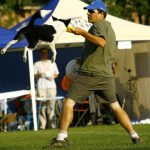 A Fish is a leaping catch that ends with the dog passing the disc back to the handler before landing back on the ground. The basic idea is catch and release, Fishing is... More to Bite and Bite to Front Cross? Why bother? Maybe I should generate another sequence, a cool sequence and work that instead.Stop looking for sexy things to do and start making everything you do sexy.
A Fish is a leaping catch that ends with the dog passing the disc back to the handler before landing back on the ground. The basic idea is catch and release, Fishing is... More to Bite and Bite to Front Cross? Why bother? Maybe I should generate another sequence, a cool sequence and work that instead.Stop looking for sexy things to do and start making everything you do sexy.
Flips Land in a Working Flank
Did you know that flips have a Working Flank? Most people don’t because flips usually start out and finish in front of the handler. The dog’s landing position and movement out of the flip can be considered a Working Flank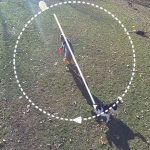 The Working Flank is a moving position. On a Working Flank the dog is out to your side some distance and holds position, moving with you as you move around the field. The... More.That’s a tremendous lesson available from this silly Flash Jam sequence. The knowledge comes from the Front Cross being on the handler’s mind.On the later reps, I didn’t put the Bite in there. I felt it was getting in the way of the crossing lesson from a Flip.
The Working Flank is a moving position. On a Working Flank the dog is out to your side some distance and holds position, moving with you as you move around the field. The... More.That’s a tremendous lesson available from this silly Flash Jam sequence. The knowledge comes from the Front Cross being on the handler’s mind.On the later reps, I didn’t put the Bite in there. I felt it was getting in the way of the crossing lesson from a Flip.
Handler Turns to Create a Working Flank
The Fish part of the move, where the handler takes the disc from the dog’s mouth while the dog is flying through the air, is attached to the Flip. If the handler grabs the disc with the right hand (as I was doing in this video up to about 35s), then the dog lands on a counter clockwise Working Flank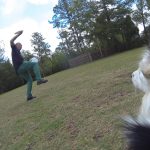 Out to the side of the handler is the Flank. If the dog is out to the handler's right or left the dog is on Flank. If the dog is moving with the... More.After 35s, I switched to the left hand doing the grabbing, and Loot finished up on the clockwise working flank making the Front Cross
Out to the side of the handler is the Flank. If the dog is out to the handler's right or left the dog is on Flank. If the dog is moving with the... More.After 35s, I switched to the left hand doing the grabbing, and Loot finished up on the clockwise working flank making the Front Cross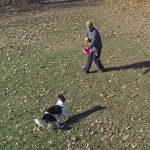 On a Front Cross, your dog switches Flanks in with you in front of them. From Clock to Counter Clockwise Flank or vice versa. Taken directly from the canine agility world, the Front... More go in the opposite direction and the sequence finish on a counter clock Working Flank.The handler turning is somewhat necessary due to the requirements of the Fish, but you can do that on any flip. Figure out what direction the dog needs to go after the flip and orient your body to set that flank.
On a Front Cross, your dog switches Flanks in with you in front of them. From Clock to Counter Clockwise Flank or vice versa. Taken directly from the canine agility world, the Front... More go in the opposite direction and the sequence finish on a counter clock Working Flank.The handler turning is somewhat necessary due to the requirements of the Fish, but you can do that on any flip. Figure out what direction the dog needs to go after the flip and orient your body to set that flank.
Bites Have a Working Flank
One of the problems with this sequence is cued Bite to Front Front is a stable position directly in front of the handler. Front is an traditional obedience skill. Usually your dog sits in this position, but standing is often acceptable as well, especially in... More Cross
Front is a stable position directly in front of the handler. Front is an traditional obedience skill. Usually your dog sits in this position, but standing is often acceptable as well, especially in... More Cross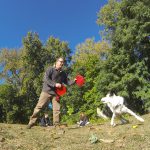 A Cross is an canine agility term that describes a change of working sides. Your dog moves from your left to your right (Heel to Side) or from Clock to Counter. Crosses are... More. It’s not at all sexy. It’s kind of dumb and redundant for sequencing, but for training purposes, it’s huge.First off it’s a great cookie for the Fish. Loot gives, I mark it and reinforce with a cued Bite. Don’t forget to do that once in a while on the Give
A Cross is an canine agility term that describes a change of working sides. Your dog moves from your left to your right (Heel to Side) or from Clock to Counter. Crosses are... More. It’s not at all sexy. It’s kind of dumb and redundant for sequencing, but for training purposes, it’s huge.First off it’s a great cookie for the Fish. Loot gives, I mark it and reinforce with a cued Bite. Don’t forget to do that once in a while on the Give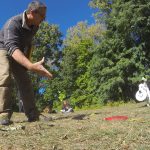 The Give is a retrieve to the hand. A cued Give is a foundational skill that is not super useful in the actual performance of disc dog freestyle, and has huge applications for... More behavior. Offer a random cued Bite, an immediate re-bite, as reinforcement for a solid give. It works wonders…But where? And how do you offer the bite? This was a challenging skill and important lesson. Where and how the cued Bite is offered changes the flank. I tried several variations of this and decided to scrap it because it was not productive for Loot and I.It’s your jam, it’s your prerogative.That said, I totally value the knowledge gained in honestly giving the sequence a shot. I now know and understand that cued Bites can and often do have a Working Flank.
The Give is a retrieve to the hand. A cued Give is a foundational skill that is not super useful in the actual performance of disc dog freestyle, and has huge applications for... More behavior. Offer a random cued Bite, an immediate re-bite, as reinforcement for a solid give. It works wonders…But where? And how do you offer the bite? This was a challenging skill and important lesson. Where and how the cued Bite is offered changes the flank. I tried several variations of this and decided to scrap it because it was not productive for Loot and I.It’s your jam, it’s your prerogative.That said, I totally value the knowledge gained in honestly giving the sequence a shot. I now know and understand that cued Bites can and often do have a Working Flank.
Crossing and Team Movement
Crossing requires fairly standard footwork from the handler. Many agility handlers have this down on the agility field. On the disc field, however, handler’s often lose their bearings when spinning and turning. The Front Cross provides a great framework for footwork and can be practically applied to create smooth team movement on sequences close to the handler.After a few reps with the Bite after the Fish, I dropped the cued Bite to focus on this crossing and team movement concept.
Bite and Flip to Front Cross
Flank recognition, understanding that your dog is on one side or the other on both the cued Bite and any Flips is a huge lesson.
The handler pivoting, setting and releasing lines to the next trick from both the Flip and the Bite are huge lessons.
The Front Cross after an interior move is smooth team movement that makes spinning and setting a line second nature.
The Lesson vs the Jam
Many of the Flash Jam sequences drawn are going to be unimpressive sequences, but tremendous lessons. When you draw a garbage sequence, give it a shot and play honestly. There is almost always a new lesson or a cool transition in there. Look for the lesson(s) or that 1 cool transition and scrap the rest.
Vision and Scope From Experience
This sequence generated a long discussion where I laid out what I thought the lessons and practical application would be. I can do this because I have the practical experience to draw from. Much of it comes from doing silly jams like this one.New players don’t have that practical experience necessary to know what moves and skills are available or how they can be used and leveraged. It’s easy to get caught inside the box and never reach your true freestyle potential because you don’t know what you and your dog are capable of.Jam in a Flash provides practical experience that generates great understanding. If you understand more about what you are doing and what can be done, it stands to reason that you will be capable of doing more and doing it better.





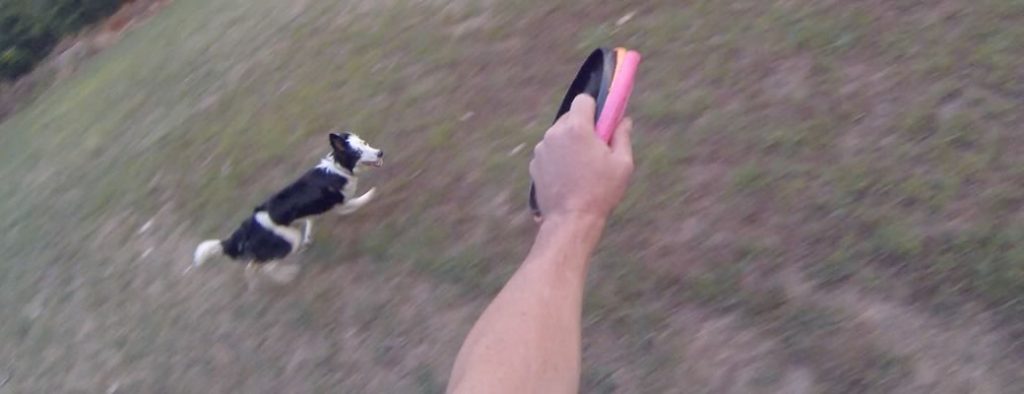
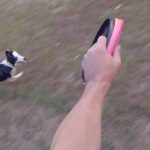
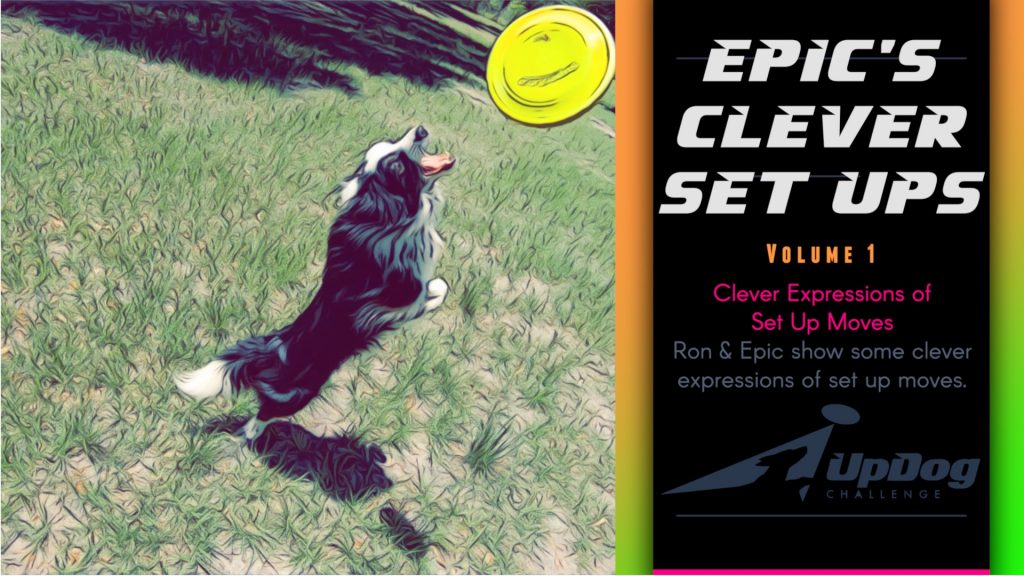

Responses